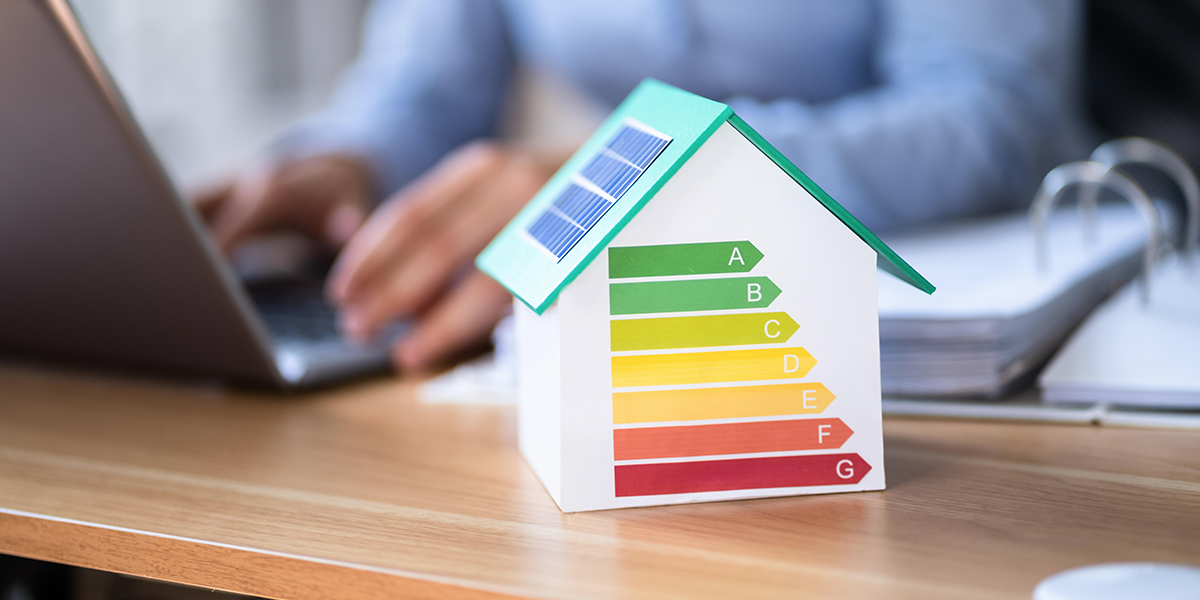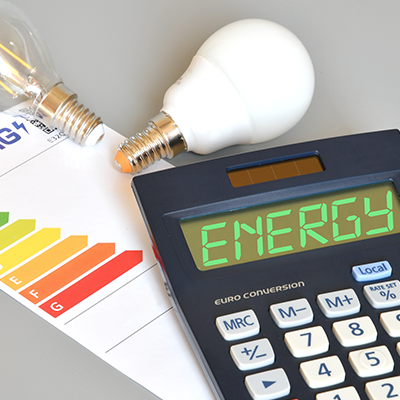A SAP rating, short for Standard Assessment Procedure rating, is a measure of a property’s energy efficiency. Used across the UK, the SAP rating system is crucial for determining how much energy a home will use and how much CO2 it will emit. This figure ultimately forms the basis for your Energy Performance Certificate (EPC), which is required when selling or renting a home, particularly in the case of new builds.
In this article, we explore what a SAP rating is, how it is calculated, and why it is essential for compliance, energy efficiency, and long-term cost savings. We also share some practical tips and explain how recent changes may influence how ratings are viewed.
The SAP rating reflects the energy performance of a dwelling. It considers how the property is constructed, insulated, heated, and ventilated. It also factors in the efficiency of lighting and any renewable energy systems in place.
Thermal insulation plays a significant role in the rating. Properties with well-insulated walls, roofs and floors retain heat more effectively, leading to reduced energy demand. Heating systems and their controls are also important. A modern, efficient boiler or heat pump paired with smart controls can significantly improve the rating.
Hot water efficiency is assessed by examining the system’s energy use over a year, including the energy needed to heat stored water. Lighting efficiency is also measured, with low-energy fittings contributing to a higher rating. Properties that incorporate renewable technologies, such as solar panels or heat recovery systems, gain additional points for reducing reliance on fossil fuels.
Finally, air tightness and ventilation affect how much warm air escapes from the building. A more airtight building with controlled ventilation will perform better in a SAP assessment.
The result is a number between 1 and over 100. A higher SAP rating means greater energy efficiency. A rating above 100 indicates that the property generates more energy than it consumes.
This rating is used to calculate the property’s EPC band, which ranges from A (most efficient) to G (least efficient).
SAP ratings are a legal requirement for all new residential buildings in the UK. They are used to demonstrate compliance with Part L of the Building Regulations, which govern energy efficiency standards in construction.
Without a valid SAP rating, Building Control cannot issue final approval for a new property. In addition to being a regulatory necessity, the SAP rating is essential for generating the EPC. This certificate must be in place before the property can be marketed or occupied.
Beyond legal compliance, a strong SAP rating benefits property owners and developers. It can increase the value of the property, lower ongoing energy costs, and attract buyers or tenants who are increasingly conscious of energy efficiency and environmental impact.
Since the August 2025 Google update, online visibility has become more closely tied to user-focused content. Homes with verified, high-efficiency ratings now feature more prominently in property platforms that favour energy transparency. In effect, a strong SAP rating now improves not just compliance and comfort, but also discoverability.
The rating is calculated using government-approved software by an accredited SAP assessor. The assessment is typically split into two stages.
The first is the design-stage assessment. This is based on the proposed specifications and architectural plans. It allows the developer to understand whether the design will meet the required efficiency standards before construction begins.
The second is the as-built assessment, conducted once the building work is complete. This assessment verifies that the property has been constructed according to the original plans or notes any deviations. It uses real-world data such as air pressure test results and manufacturer information for installed systems.
Once all data is gathered, the assessor inputs it into the SAP software. This tool calculates the property’s energy demand, CO2 emissions, and projected annual energy costs. The final SAP rating and associated documents are then generated.

Several factors influence the final SAP score. The thermal efficiency of the building fabric is central. This includes the insulation in walls, roofs and floors, the quality of glazing, and how well the building retains heat. Better insulation reduces heat loss and lowers energy demand.
The efficiency of the heating system is another key component. Properties with modern systems like condensing boilers or air source heat pumps will generally score higher. Advanced controls, including thermostats and zoning, also contribute positively.
Renewable technologies like solar PV panels can significantly boost the SAP score. By reducing the property’s reliance on the national grid, these systems demonstrate a commitment to sustainability.
Air tightness is also a major factor. The tighter the building envelope, the less heat is lost through unwanted draughts. However, ventilation must also be managed to ensure good air quality. Mechanical ventilation systems with heat recovery are often beneficial.
Lighting can also affect the score. A full specification of energy-efficient lighting throughout the property can make a measurable difference.
Only accredited SAP assessors can carry out these calculations. They use official tools and follow set procedures to ensure each rating is consistent and accurate. The qualifications and experience of the assessor are important to ensure compliance and avoid unnecessary delays.
At SAP Assessment, we provide both design-stage and as-built SAP assessments. Our team works closely with builders, developers, and architects to ensure your project runs smoothly from start to finish. We guide you through the process, offer technical advice, and help you meet your compliance obligations efficiently.
Let’s take an example from a recent client case. A small detached new build originally specified basic insulation and a standard gas boiler. During the design-stage SAP assessment, the projected rating came in at 67, a low Band D.
By switching to a more efficient air source heat pump, upgrading to triple glazing, and increasing loft insulation thickness, the reassessment pushed the rating to 84, a high Band B.
This not only made the property more marketable but also helped secure a better green mortgage rate for the buyer. It’s an example of how investing in smarter materials and systems pays off.
If you’re aiming to improve your SAP score, several practical steps can be taken. Enhancing insulation is often the most cost-effective option. Using materials with lower U-values helps retain heat and reduces overall energy demand.
Upgrading to a more efficient heating system is another way to boost the score. Replacing outdated boilers with modern alternatives or installing renewable heating systems can significantly improve performance.
Adding renewable technologies such as solar panels can also help. These systems reduce grid dependence and contribute positively to the SAP rating. Improving air tightness during construction and specifying energy-efficient lighting throughout the property will also yield measurable benefits.
At SAP Assessment, we offer design-stage consultation to help you identify these improvements early on. Our recommendations are tailored to your building and budget, helping you achieve the best possible score.
The SAP rating is a fundamental component of a property’s energy profile. It determines whether your building complies with regulations and how it performs in terms of energy use and emissions. Understanding how the rating works and how it’s calculated can help you design more efficient buildings, reduce long-term costs, and meet legal requirements without last-minute issues.
To get started or speak to a qualified assessor, visit our Contact Us page. You can also find more information on our SAP Assessments and EPC Certificates service pages.

Understanding EPC Certificates When Selling a Home If you’re planning to sell a property in the UK, one of the first things you’ll need to...

Understanding EPC Timelines in the UK An Energy Performance Certificate (EPC) is a legal requirement when selling or renting a property in the UK. It...